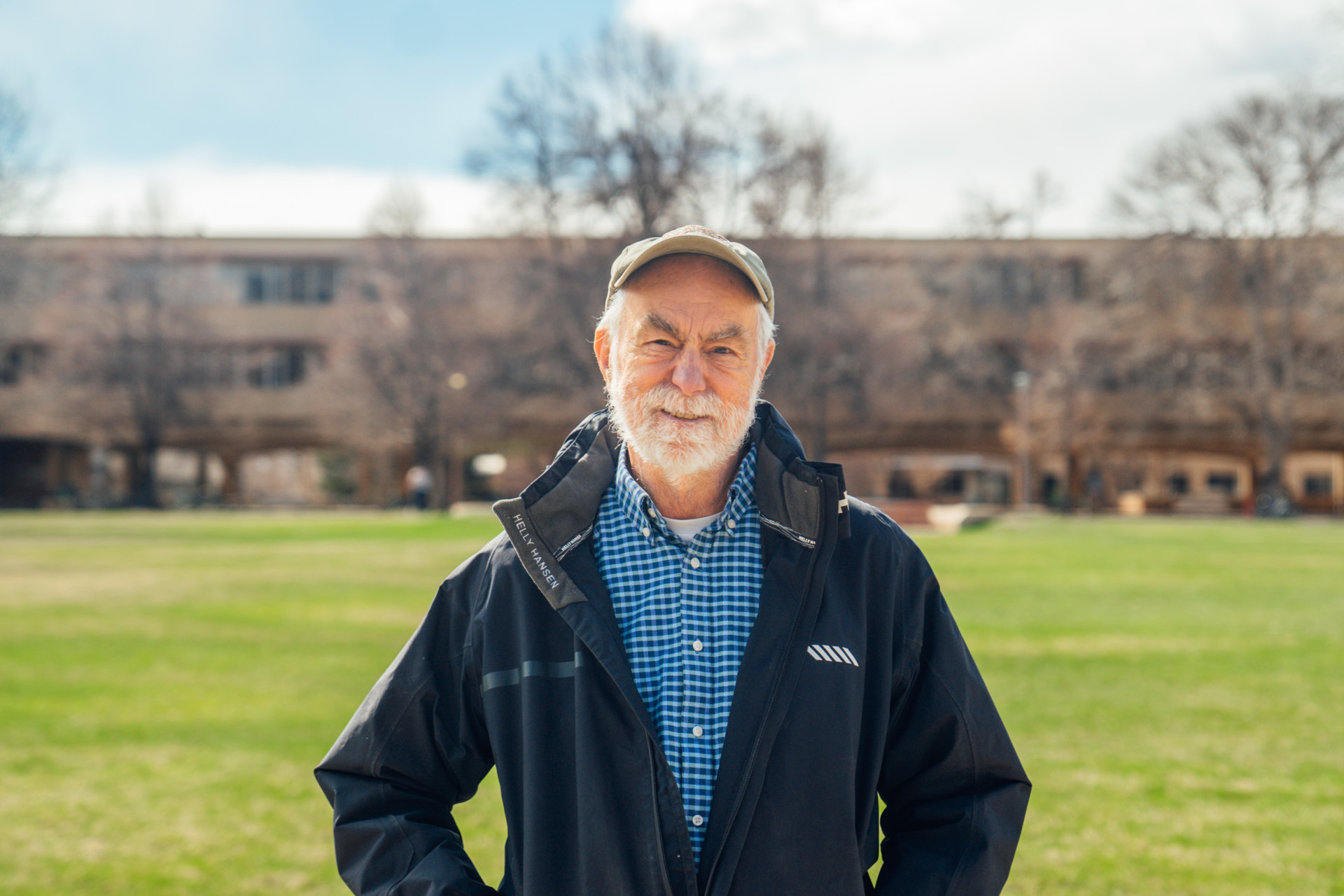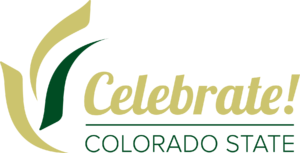
Photo by Trout Buesser
Meet Bill Parton, CSU professor emeritus in the Department of Forest Rangeland and Watershed Stewardship and a senior research scientist at the Natural Resource Ecology Laboratory. He has been a part of CSU for more than 50 years. As part of the Celebrate! CSU month, Parton sat down to share his experiences and memories.

Q: How long have you worked at CSU and what drew you here?
A: I started working at CSU during the fall of 1971 as a postdoc (for the collaborative environment and the skiing!) in the Natural Resource Ecology Lab (NREL). In 1975, I started working at NREL as a research scientist. Around 1990, I started working as a professor in the Range Science Department, as well. I retired from my CSU teaching position in 2001 and continue to work for NREL as a senior research scientist.
Q: What is the most important thing you’ve learned since you started teaching?
A: Most of my career at CSU has been involved with the development of ecological models and teaching students how to use ecosystem models to help manage agricultural and natural ecosystems. The most important thing I learned with my ecological model research is the ability to work with a diverse group of fellow scientists who are interested in solving complex environmental problems. Luckily, NREL was the perfect place to work since the scientists were all interested in working with each other and figuring out the best way to manage grasslands, forests, and agroecosystems.
My graduate and undergraduate teaching experience at CSU taught me how to get students interested in how mankind is changing the climate and natural ecosystems and how to get students to use ecosystem models to solve environmental problems (e.g., reducing emissions of the greenhouse gasses, loss of soil fertility, and nitrate leaching into the Gulf of Mexico).
I was trained as a meteorologist in both graduate and undergraduate school and have a major interest in weather forecasting and studying atmosphere/biosphere interactions, but honestly, if I had not been in research and teaching, I would have loved to have been a ski bum in the winter and a farmer in the summer!
Q: Favorite memory at CSU?
A: My favorite memory at CSU was working with interdisciplinary groups of scientists and students at NREL during the 1970s and 1980s to tackle challenging environmental problems and gaining an understanding of how ecosystems work. It was scientifically rewarding and personally fun due to the great group of people associated with NREL, many of whom remain dear friends. During that time (1970 to 1980s), we were developing the first ecosystem models in the world!
Q: Favorite outdoor space in Colorado?
A: My favorite outdoor spaces in Colorado include lakes and mountains. I like to hike, ski cross country and downhill in the mountains, and sail on the lakes in Colorado. We have a cabin in Montezuma County (near Keystone at 10,500 feet) which allows easy access to both downhill and cross-country skiing and summer hiking.
Q: What are your hobbies?
A: My hobbies include skiing, hiking, tennis, and sailing. From 1972 to 1990 I sailed Hobie Cats (16- and 18-foot boats) competitively in Colorado and went to nationals several times. I also won the ski/sail race at A-Basin/Dillon for Hobie Cat 18’s. I also like to ski and hike, and I have played USTA tennis competitively during the last 20 years.
Q: Advice for upcoming teachers and students?
A: I learned that the best way to get our ecosystem models used by a wide scientific community was to make the models readily available (distributed without cost) and to spend time training CSU students and scientists to use them. We also ran weeklong biannual ecosystem model training workshops for scientists in the U.S. and around the world, an experience that has taken me and many of my colleagues on great adventures! By making the ecosystem models widely available, training other scientists how to use the models, and fostering an open and collaborative attitude toward the work, over 300 peer-reviewed scientific papers using Century models have been published. So, my best advice is to surround yourself with good people and collaborate!
Q: Where is your favorite place you’ve traveled?
A: I have traveled extensively worldwide working with scientists in Europe, Africa, Asia, and Australia. My favorite places to work and visit are Australia and Africa. I visited almost all the major cities in Australia working with scientists from universities and federal research groups. Australians are very open, friendly, and easy to work with. I have also worked and traveled extensively in Africa (Nigeria, South Africa, Kenya, Senegal, primarily) training scientists how to use ecosystem models to optimize management of their rangeland and agroecosystems. Travel in Africa is difficult but worth the effort for the varied ecosystems and the wonderful people.
Q: What are you currently researching?
A: My 50-year career has centered on developing ecosystems models and studying atmosphere biosphere interactions. One of the main research goals during the last 20-30 years has been to use ecosystems models to determine how to reduce net emissions of greenhouse gasses (N2O, CH4, and CO2) from agricultural systems and reduce the negative impact of agricultural management practices (e.g., nitrate leaching into the Gulf of Mexico). Our research results show that we could reduce nitrate leaching and greenhouse gas fluxes by 50% using best management practices such as minimum tillage, optimal fertilizer application, and crop rotations without reducing crop production. Using our ecosystem models, we can predict the best way to manage agricultural systems at the site, regional, and global scale, reducing greenhouse gas fluxes. We have also linked these results to economic models to maximize farmer profits while reducing greenhouse gas fluxes.
Since 2018, we have developed a web-based computer model system to predict grassland plant production for ranchers in the Great Plains and Southwest. We now release biweekly predictions, starting each Spring, of rangeland plant production at a 10 km scale in the Western U.S. We predict rangeland plant production as a function of historical daily weather and then predict plant production if precipitation was normal, above normal, or below normal for the remainder of the growing season. We have worked extensively with USDA rangeland scientists and ranchers in the western US to develop our GrassCast rangeland plant production system. This kind of real-world application of our models is especially gratifying for me, and a fulfillment of the professional goals I set for myself in the 1970s.
Q: Most Important honors and accomplishments
A: I am proud of the fact that my ecosystem models are some of the most widely used in the world to figure out how to reduce net greenhouse gasses from natural and managed ecosystems. I was recently named by Reuters as one of the top climate change scientists in the world (#296), acknowledged by the Ecological Society of America and the American Geophysical Union as a Fellow, and have an h-index of 92. There is no greater honor, however, than to be husband to my wife, Leni, and dad to my kids, Kenzi and Jamie, and to have had the opportunity to share the many joys of life in Colorado with them.